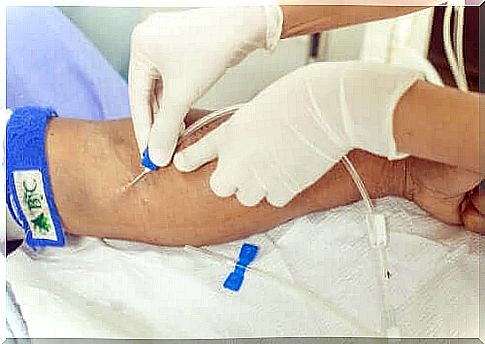A Central Venous Catheter: Everything You Need To Know

Central venous catheter placement is a surgical procedure that aims to expose the vein of an extremity or the neck. It attempts to introduce a cannula that can be short or that can reach the vena cava or right atrium.
The access consists of an implanted venous access port that provides physicians with safe and permanent access to a patient’s vein. Therefore, experts recommend a central venous catheter in patients who need a cannula in their vein and where percutaneous vascular access is impossible.
Medical professionals often use it in patients who require continuous administration of injectable drugs, such as patients receiving chemotherapy.
Benefits of a central venous catheter
A central venous catheter is an open surgical procedure. In this process, the medical professional opens access to It can be very beneficial for the patient due to the following characteristics:
- Doctors can introduce long catheters with direct visualization of the vein.
- In this way they can administer chemotherapy, total parenteral nutrition (TPV) or also hypertonic solutions.
- They can place the catheter tip in the center of the vein.
- Using the catheter, the doctor can record the central venous pressure.
- These catheters can remain in place for a long time, even several years if the situation calls for it.
It is also important to mention that since the professionals can place the tip in a large vein or the right atrium, they can also prevent the development of sclerosis and phlebitis.
Both conditions can develop when necessary fluids are delivered through the bloodstream, the peripheral vein, using short catheters.
Applying a central venous catheter

The first issue to consider for proper execution of the technique is the position of the patient. It depends on where the doctor wants to place the central venous catheter.
When it comes to adults, doctors usually choose the anteromedial part of the arm. Or, to put it in layman’s terms, just above the elbow. The goal here is to insert the central venous catheter into the basilica vein. Other common places are also:
- The jugular veins of the neck.
- The cephalic vein in the deltopectoral groove.
- The great femoral vein.
If the patient is a child, the process usually focuses on the saphenous vein. This means one centimeter above and in front of the inner or medial malleolus of the ankle.
It is essential to note that, if the patient’s condition permits, the surgeon should always explain the procedure and obtain approval before starting.
After choosing the location where the doctor will perform the procedure, the patient is placed in the correct position. When the medical professional is going to place the central venous catheter in the arm or deltopectoral groove, they will position the arm and then secure the arm.
In addition, the professionals must always wear appropriate clothing, which consists of a hairnet, a medical face mask, a sterile apron and gloves.
Complications

In general, the complications of this technique result from the surgical procedure. The surgical risks are thus related to the catheter in situ or postoperative risks, which usually occur during postoperative care. The most common surgical complications include:
- Inability or difficulty identifying or channeling a vein.
- Venous rupture or arterial lesions – in this case there can be really serious consequences.
- Vein rupture, bruising, or arterial ligation.
- Difficulty moving the catheter.
In addition, there are potential postoperative complications, based on the placement of the catheter in the vein. These can occur due to lack of adequate care or because the catheter has been in the body for a long time. The risks are as follows:
- Venous thromboembolism.
- Phlebitis – this problem sometimes occurs when the catheter is in the vein for an extended period of time.
- Accumulation of pus at the incision site – this is usually due to infected hematomas which in the worst cases can lead to the development of generalized sepsis.
Therefore, good postoperative care is of fundamental importance. For example, professionals recommend gripping the catheter with sterile gauze. In this way, the chance of bacterial colonization is avoided as much as possible. It also keeps the catheter in place during handling or when the patient is moved.









